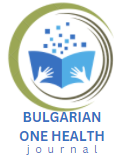Summary
Food colours are food additives that are added to foods after authorization for use by the European Commission and scientific safety assessment by the European Food Safety Authority. Each colour is added to foods to achieve a specific purpose, such as to compensate the loss of colours during food processing, to enhance natural colours, or to add colour to foods. They can be obtained via natural or synthetic pathway. Artificial (synthetic) colours are thought to increase hyperactivity in children. The current dietary exposure assessment of artificial food colours was performed using the Food Additives Chronic Exposure Assessment Tool (FAIM). The synthetic food colours used to assess the chronic exposure of children in Bulgaria are: Tartrazine, Quinoline Yellow, Sunset Yellow FCF, Azorubin, Ponceau 4R and Allura Red AC. The exposure was calculated for different food groups for which the relevant colours are authorized, according to Regulation (EC) No. 1333/2008 and the same was compared with the ADI for the respective colours. The obtained results of the exposure assessment of the considered artificial colours are below the corresponding ADI for mean and high consumers, considering that the assessment considered only those for which there is an established legislative level of use in the European legislation. However, the results cannot guarantee the actual exposure to colours of children in Bulgaria, due to the uncertainties described in the assessment.


